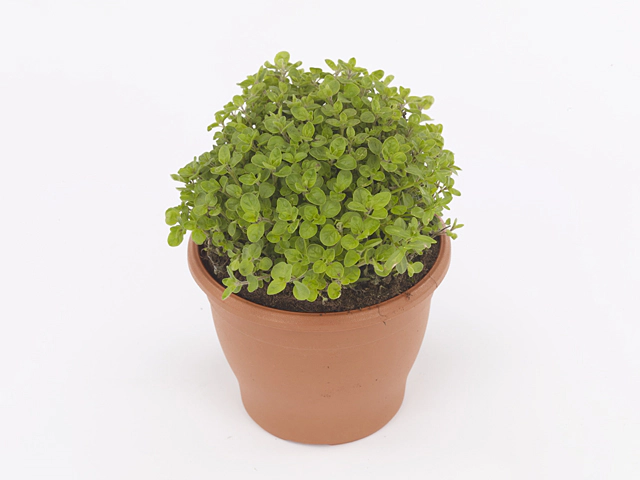Origanum vulgare

| Winter hardness | Good (USDA-zone 5, 6) |
| Leaf, scent | Pleasantly scented |
| Plant height | 40 - 50 cm |
| Flowering month(s) | July; August; September |
| Light conditions | Sunny |
| Moisture requirements | Well-drained |
Marjoram and oregano, scientifically known as Origanum vulgare, are popular culinary herbs that are widely used in various cuisines around the world. These herbs are not only versatile in the kitchen but also easy to grow, making them a favorite among gardeners.
One of the remarkable qualities of marjoram and oregano is their winter hardness. With a USDA hardiness zone rating of 5 to 6, these herbs can withstand relatively cold temperatures, making them suitable for cultivation in many regions. This is great news for gardeners who live in areas with harsh winters as they can enjoy fresh herbs even during the colder months.
In terms of appearance, marjoram and oregano reach a height of 40 to 50 cm when fully grown. The plants produce small, delicate leaves that are pleasantly scented. The aromatic foliage enhances the overall appeal of these herbs, making them a delightful addition to any garden or herb bed.
When it comes to flowering, marjoram and oregano bloom during the summer months, specifically in July, August, and September. The blossoms add a touch of beauty to the herb garden, attracting bees and other pollinators. The delicate flowers are also edible and can be used as a garnish or added to salads for a pop of color and flavor.
Both marjoram and oregano thrive in sunny conditions, requiring at least six to eight hours of direct sunlight daily. It is crucial to provide them with ample light for healthy growth and to enhance the flavor of the leaves. Additionally, these herbs prefer well-drained soil, meaning the soil should not be overly wet or waterlogged. Adequate drainage is necessary to prevent root rot and other moisture-related problems.
In terms of moisture requirements, marjoram and oregano prefer a well-drained soil. They do not tolerate excessive moisture and may experience root rot if the soil is constantly wet. Therefore, it is advisable to water these herbs sparingly, allowing the soil to dry out slightly between waterings.
Marjoram and oregano are not only valued for their culinary uses but also for their medicinal properties. These herbs are known to have antioxidant, antimicrobial, and anti-inflammatory properties, making them beneficial for various health conditions. The leaves can be used fresh or dried and added to soups, stews, sauces, and marinades to enhance the flavor and promote overall well-being.
In conclusion, marjoram and oregano are delightful herbs to grow in any herb garden. With their winter hardness, pleasant scent, and beautiful flowers, they add visual appeal and culinary versatility to any landscape. By providing ample sunlight and well-drained soil, these herbs will flourish and provide you with a fresh supply of flavorful leaves throughout the year. Whether used in cooking or for their medicinal properties, marjoram and oregano are truly valuable additions to any herb collection.
Market availability index by month:
| Jan. | Feb. | Mar. | Apr. | May | Jun. | Jul. | Aug. | Sep. | Oct. | Nov. | Dec. |
|---|---|---|---|---|---|---|---|---|---|---|---|
| 2 | 2 | 3 | 4 | 3 | 2 | 2 | 2 | 1 | 1 | 1 | 1 |